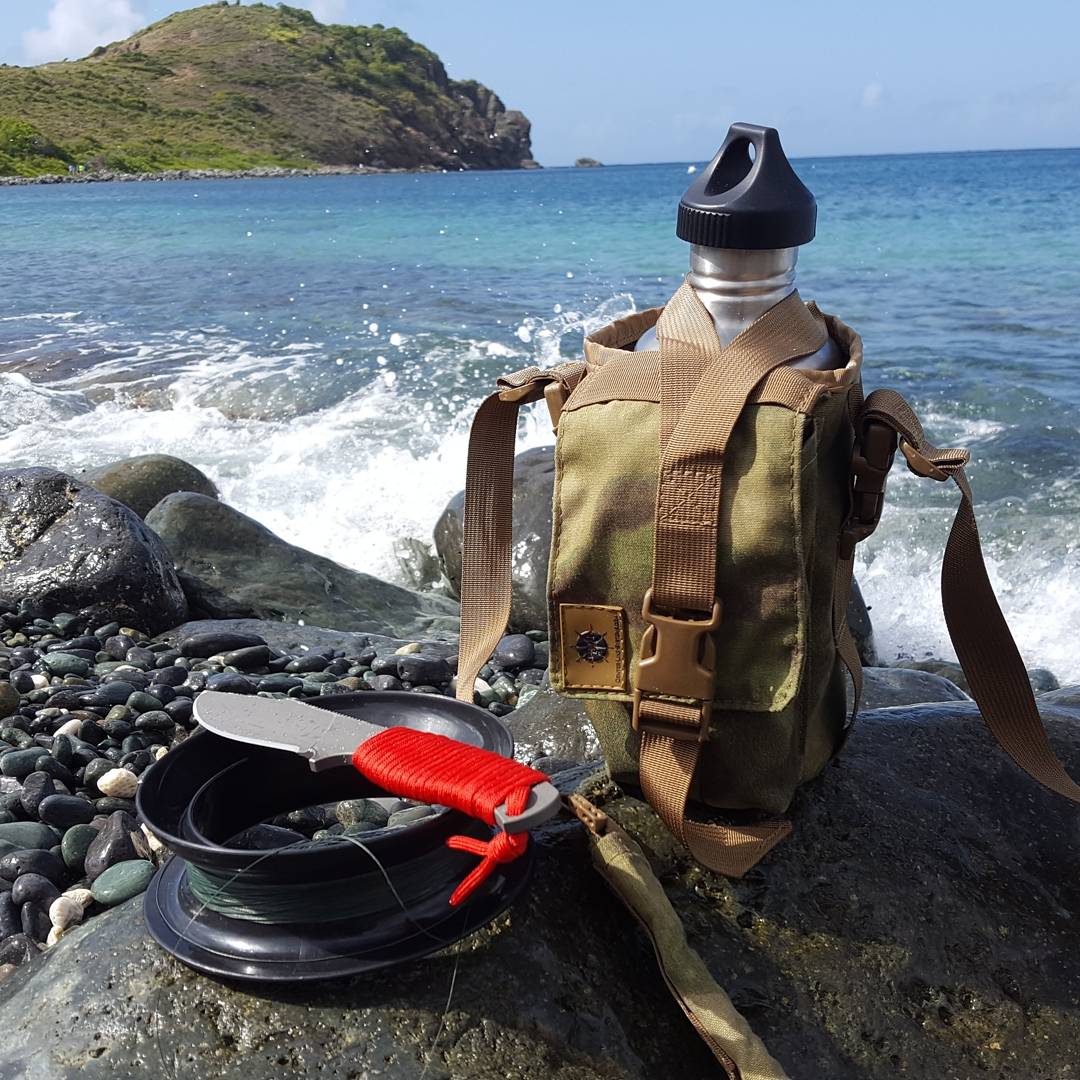By: Kevin Estela, Owner/Lead Instructor with Estela Wilderness Education
The U.S. Virgin Islands is a playground for traveling explorers. Remote beaches, clear water, tropical foods, isolation...if these words resonate with your sense of vacation or adventure, you need to look into what these islands have to offer. Furthermore, the USVI is pretty much an extension of the United States with many comforts from home being found throughout the tropical islands. After a crazy summer of travel, training, and writing, I decided to give myself a well-deserved relaxing time in St. John but as you’ll read, even when I try to relax, I always find ways to keep from idling for too long.
Beach Combing
Not long after landing in St. Thomas, and traveling by taxi and ferry, I ended up on the Island of St. John. I picked up my rental Jeep and I was on my way to explore the island. It took a short while to get used to driving on the left-hand side of the road but as long as I stayed focused, turns and staying in the correct lane were not a problem. Jeeps are the only vehicle I recommend for getting around the island. The roads are steep and windy and many times they flood. I am glad I didn’t rent a basic car.
Whenever I travel, I usually pick up local provisions for the time I’m there and in St. John, this meant spending a good amount at the local markets. If there is any drawback to traveling to this Island, it’s the price of the food. However, if you keep your eyes open and have a little bit of tropical plant knowledge, you’ll find various edibles growing all over the island. Just avoid purchasing any reef fish as they have a toxin that is very dangerous to human health. There’s a reason why you won’t see many locals with rods going after reef fish.
Diving and Snorkeling
One of the major draws to St. John is the diving. I heard some great accounts of wildlife encounters from friends who previously traveled there and my own experiences certainly matched theirs. While on a couple boat dives with Low Key Sports, my divemaster pointed out a spotted eagle ray, various types of tropical shrimp, lobster, turtles, squid and endless varieties of reef fish. I didn’t need to wear any bulky insulation in the tropical waters and I did both dives with a synthetic shirt acting as a rashguard and just a pair of board shorts. I carried a Mission MPD-Ti tucked in the pocket of my shorts just in case. “In case of what?” you might ask? Well, you never know what you’ll encounter that can entangle you or what you’ll have to cut free. I know I’ve seen many videos of wildlife suffering from mistaking human litter as food and, well, carrying a blade is just smart diving. Carrying the blade this way lead me to the conclusion I need to fashion a manner of carry for when I don’t have a belt on. This will likely mean using an Ulti-Clip that will clip into fabric alone. Luckily, tucking the blade in my shorts pocket was secure enough for the time being while I continued to explore the waters snorkeling each day when I didn’t strap a tank on. I hate to say it but I think the snorkeling might have been more fun than the diving.
Hiking Companion
What people don’t realize about St. John is the network of trails that are on the island. St. John has a rich history and there are many ruins open to the public that are leftovers from the days of sugarcane harvesting and other types of farming. Walking around the island, I found very curious wildlife such as deer, anoles, wild donkeys and tropical birds many of which will literally walk up on a hiker taking a break without them noticing. The humidity and temps under the canopy can be intense so it’s not uncommon to hike along the coastline and jump in to cool off when it becomes too much to bear. Many travelers will hike to the top of “Ram’s Head” to watch the sunrise. If you’ve never hiked in the tropics, you simply have to accept being in a constant state of damp and covered in a varying amount of sand, everywhere. This can wreak havoc on gear and what you carry needs to be selected carefully. That is one of the reasons why I chose to pack the MPS in titanium. From cutting up fruit to carving up driftwood for an upcoming article I’m writing for a magazine to simple peace-of-mind at night next to my bed, that blade did it all great. It’s an ideal beach walkabout blade and the size isn’t too large to leave behind or too small to lack cutting power.
Some Advice:
I traveled to the USVI for some rest and relaxation but the vast majority of my days were spent in the water propelled by a set of fins or on the trails looking for the island’s history. Each night, I drove into town and hung out with locals eating some of the best damn happy hour fish tacos and seafood (don’t worry, not the tainted reef fish) I’ve ever had and maybe I tried one or two signature St. John “painkiller” drinks. I’d recommend exploring these islands to anyone as I feel they have so much to offer the traveler and adventurer. But, before you go, here’s a quick list of some key items you don’t want to leave home without.
#1. Sunblock: Thanks to my lifeguarding days, I’m pretty good with applying this but even on one occasion of either laziness or naivety, I went without it for an hour or so. Not surprisingly, my stomach burned pretty badly. You’re close to the equator. Respect the sun.
#2. Something to sit on: St. John is unlike other islands where the hustle is always present. There aren’t a bunch of guys trying to sell you coconuts, trinkets and other swag. Get a good backpacking chair and blanket. If you think of it, bring a backpacking hammock. Many of the beaches are remote and you’ll want to hike to them and layout your own beach camp.
#3. Bug Spray: Bugs exist even in paradise. Bring some to fight off the no-see ums near the mangroves.
#4. Passport: You can fly into the USVI with a driver’s license but if you want to see the British Virgin Islands, bring a passport.
#5. Sense of adventure and a good companion blade or two like those from Mission Knives. They’ll see you through!
Should you have any questions about my trip or would like to learn more, please message me at estelawildernesseducation@gmail.com . For more photos, follow me on Instagram @estelawilded







